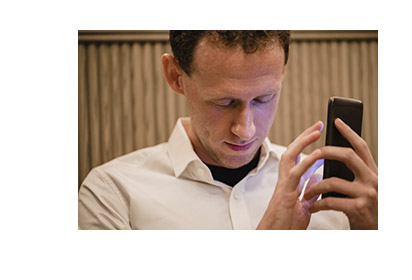For most of us, it’s hard to imagine our lives without pocket access to messages, emails, social media, the internet and our camera. However, the beginning of this technological revolution left out a substantial part of our community. For many people with disability, the first smartphones totally locked them out.
When Steve Jobs launched the iPhone in 2007, it took the tech world by storm and changed the way most of us used a phone forever. This pocket-sized device combines a mobile phone, a portable music player, a camera and is linked to the internet. It’s been called the most successful single product in technology history.
There was a large group of people, however, who were not able to join the new iPhone community. If you were deaf, there was no way to understand someone on the other end of a phone call. If you were blind, how could you work out where to tap an entirely smooth touch screen? If you had a motor control disability, pressing the small home button was near impossible. Thankfully, two years later an announcement from Philip Schiller, Apple’s senior vice president of World Wide Product Marketing, recognised this exclusion and the need for change. His announcement lasted just 36 seconds.
Shelly Brisbin has produced an audio documentary tracking this transformation and the impact it’s had on the lives of people with disability. The documentary, 36 Seconds That Changed Everything, tells the story of how the iPhone, a device that once excluded people with disability, became one of the most transformative forces in the lives of those same people.
In June 2009, after announcing that accessibility would be part of the third generation iPhones, Apple added features that meant people with blindness, low vision, and hearing loss could use the devices. Later, users with motor delays and cognitive disabilities also gained the tools they needed to use the iPhone.
Shelly Brisbin’s audio documentary goes into detail about what these changes meant to individuals and the greater community. It features interviews and looks at the impact that iPhone’s new accessibility features made. It also looks into what Apple’s leadership in accessibility has meant to new technologies in the last 10 years and what the future holds.
You can find out more, listen to the audio documentary or read the transcript on the 36 SecondsThat Changed Everything website.


